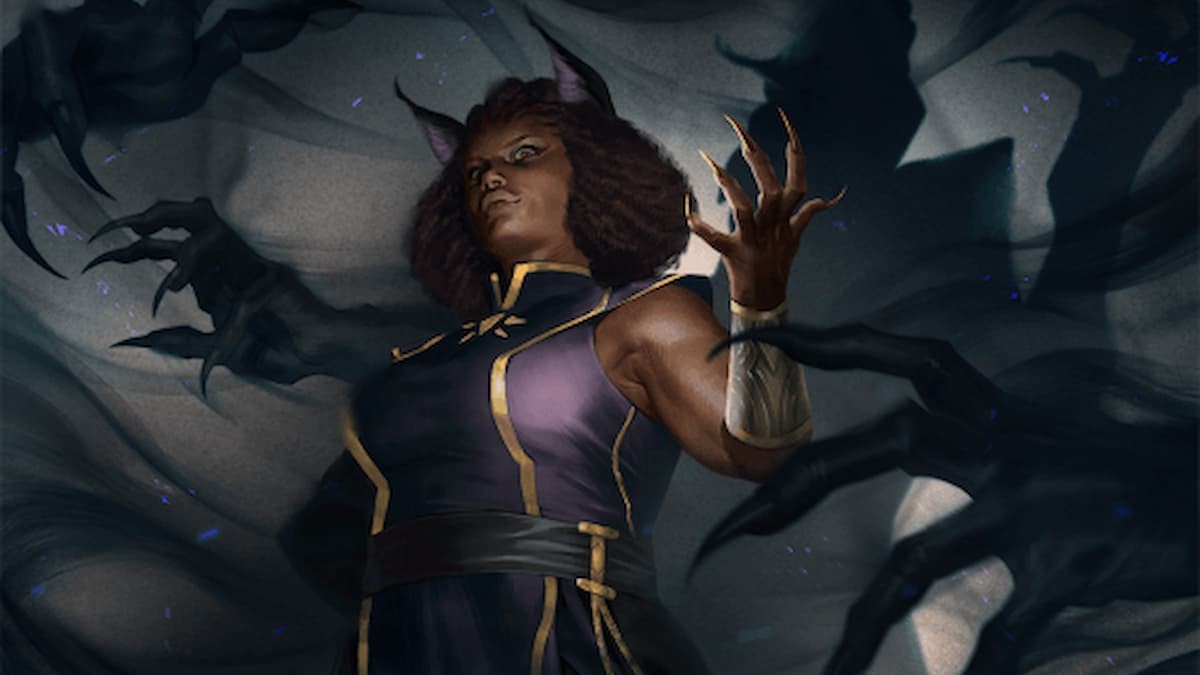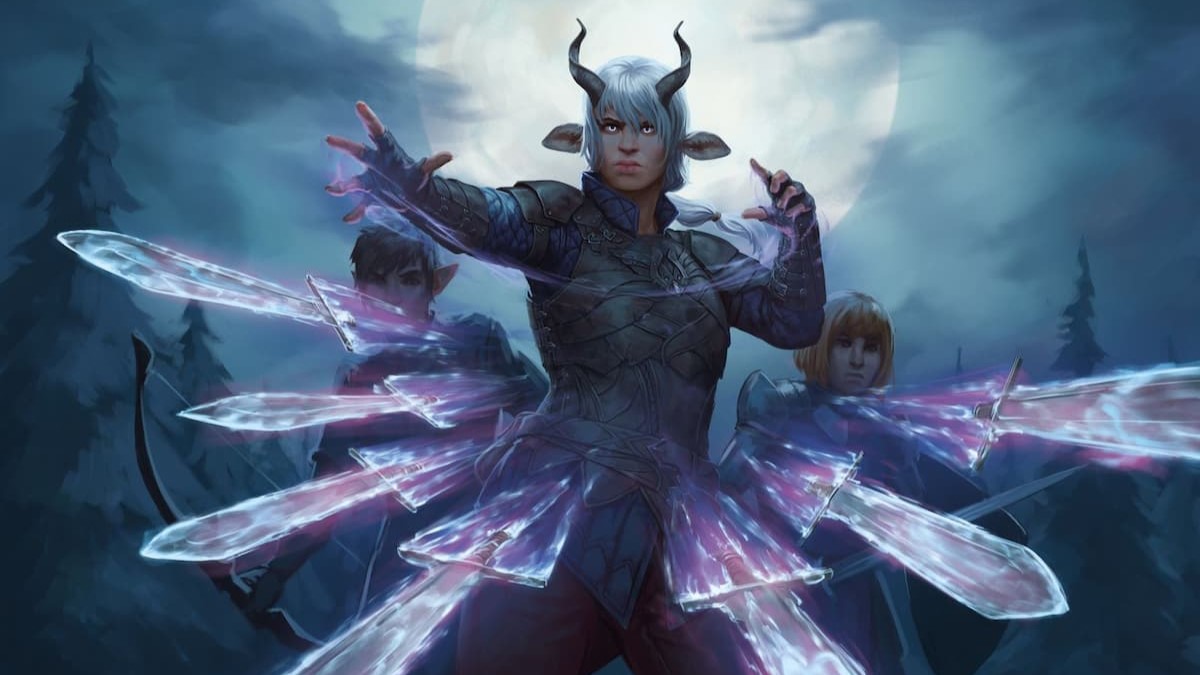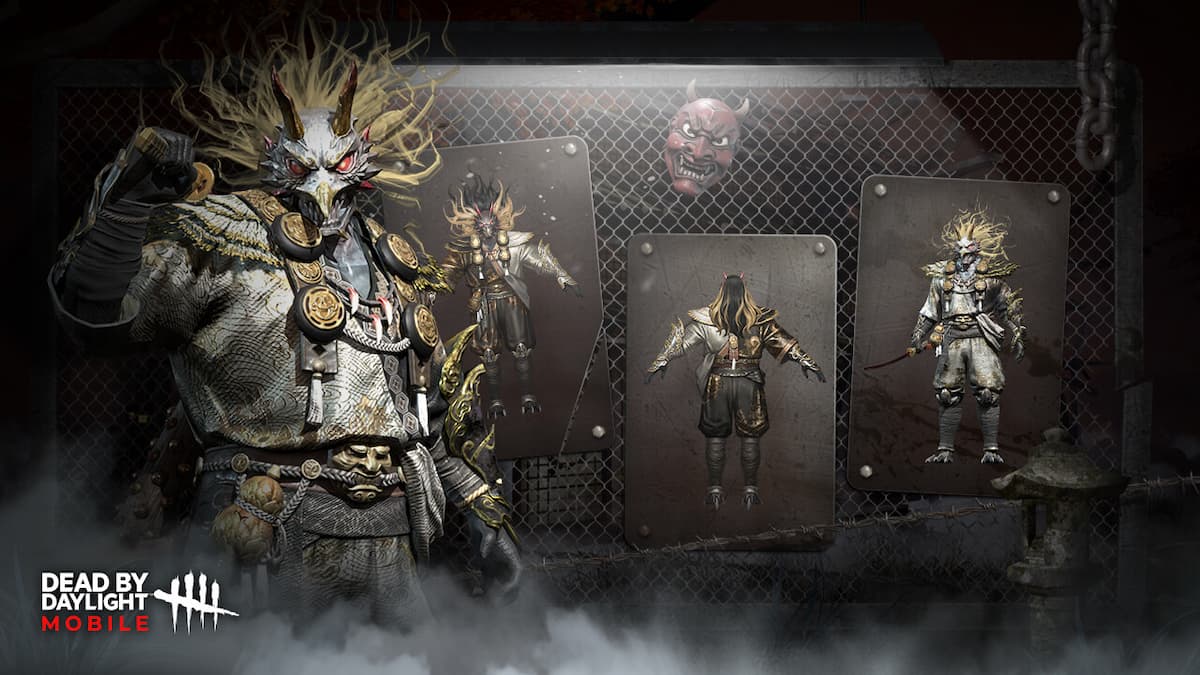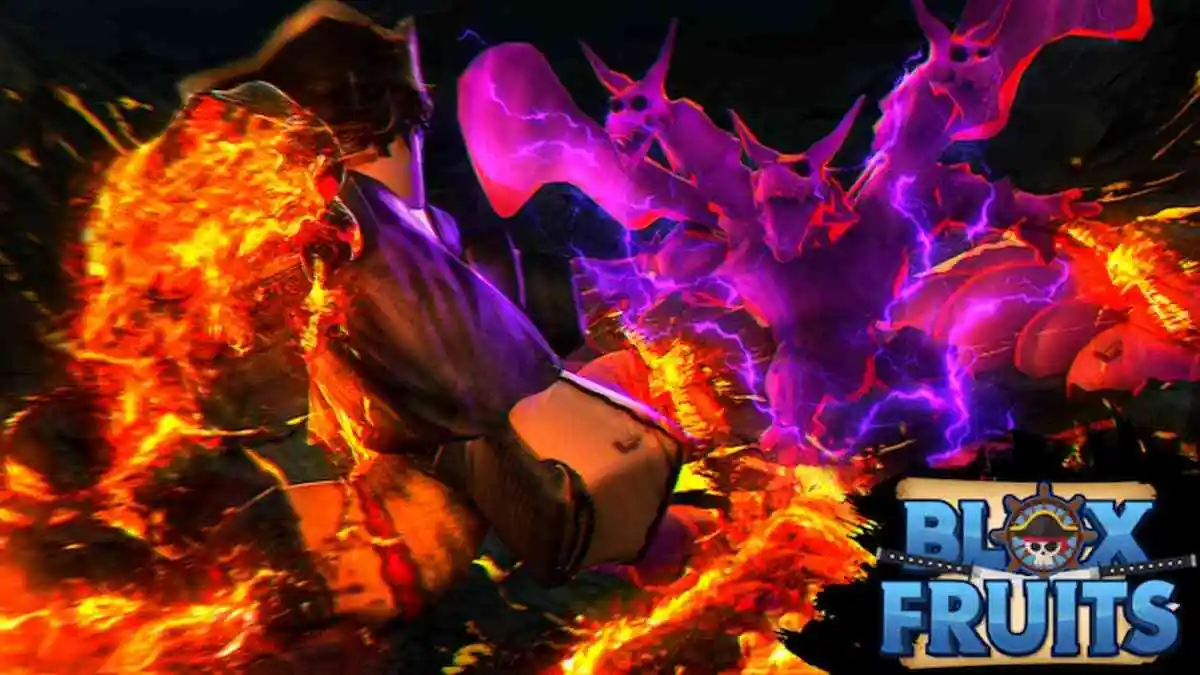The second iteration of Daggerheart available to the public is here. Changes to various game mechanics, balance fixes, and additional notes added for clarity were made to the manual. Matt Mercer and Spenser Starke reviewed the changes in a live stream, focusing on the Big 6 updates that have the most impact on the Daggerheart system.
All Changes in Daggerheart Update 1.3
The focus of update 1.3 was on balancing flexibility and narrative freedoms with tactical stats, thus ensuring all players are featured equally throughout all gameplay. Focus on helping GMs make running a session easier with more refined rules and optional features. GM section of the manual reorganized and added tables and charts for easier reading.

Along with the updates, two new features were added to the system: fleshed out rules for group action rolls, and Environments. Similar to Adversaries, Environments are premade areas your party can visit that outline enemies, the general area, and more. It also shows you how to create your own Environment for places your campaign will return to.
The 6 Big Changes
- Damage Thresholds
- Stress and Armor Systems
- Actions, Reactions, and Passives
- GM Fear and Actions
- Addition of Group Action roll mechanics
- Addition of Environments
Along with the largest changes, tweaks were made to the layout of the manual, classes, advantages and disadvantage, and Domain cards. For those that have already printed the system, the update is separated into various folders so you only need to update the files of the effected pieces. If you printed all the Domains, you only need to update that section.
Complete Daggerheart 1.3 Change Log Notes
Universal Changes
- Damage Thresholds: Adjusted Damage Thresholds across all classes. Stress Points are no longer marked when you take damage below your Minor threshold. This simplifies the armor/threshold/HP decision process during combat.
- GM Moves and Fear: Changed GM roll structure so you can now choose to make a move or take Fear on rolls with Fear, not both. This reduces the Fear economy and impacts the balance of if/how much Fear is spent on adversary moves. Also streamlined what you can spend Fear on, taking weight off the GM’s side of play.
- Stress Points: The starting number of Stress Point slots for all players is now 6. Stress Points are no longer marked when you take damage below your Minor threshold.
- Use an Action: Added “use an action” phrase to moves that require a token to be added to the action tracker during combat, even if they don’t require an action roll to use.
- Chapters: Renamed book divisions to “chapters” instead of “parts.” Split some content from chapters 3 and 4 into a new chapter 5, and the former chapter 5 (with currently unwritten content) has become chapter 6. INTRODUCTION
- Heart of the Game: Added section “Rulings over Rules” about focusing on narrative rulings instead of the letter of the law.
- Safety Tools: Moved Lines and Veils, X-Card, and Open Door Policy from “A Table for All” to chapter 3’s “Session Zero and Safety Tools” section.
Manuscript Updates
Chapter 1: Preparing for Adventure
- Classes, Ancestry, and Community features: Reworded many features for clarity; the only changes itemized below are those that changed not only in wording, but also in intended effect.
- Bard Class: Modified the Rally class feature.
- Guardian Class: Modified the Unstoppable class feature.
- Ranger Class: Modified the Companion Sheet and Ranger’s Focus class feature.
- Rogue Class: Modified the Hide class feature, along with the Nightwalker Specialization and Mastery.
- Seraph Class: Modified the Prayer Dice class feature.
- Sorcerer Class: Modified the Channel Raw Power class feature.
- Warrior Class: Modified the Battle Strategist and Combat Training class features, and added the Attack of Opportunity class feature.
- Domain Cards: Swapping cards in combat now uses an action.
- Loadout and Vault: Clarified that the recall cost is paid for the card in your vault, not your loadout.
- Ancestry: Modified the Daemon, Drakona, Faerie, Faun, Fungril, Galapa, Human, Katari, Orc, and Ribbet ancestry features. Updated all ancestry descriptions with lifespans and other minor adjustments.
- Community: Modified the Highborne, Wildborne, Ridgeborne, Wanderborne, and Seaborne community features. Updated all community descriptions.
- Experiences: Expanded list of suggestions for player character experiences.
Chapter 2: Playing an Adventure
- On Your Turn: Moves are now considered actions if they require an action roll or state they are actions, and they require placing a token on the action tracker. (This mirrors the updated adversary rules, which distinguish some features as actions.)
- Advantage/Disadvantage: Changed advantage system to make crits and rolls with Hope more likely. Advantage now gives the PC an additional Hope die (not a d6) they roll, then choose which to use. Disadvantage now has them roll an additional Hope die (not a d6) and take the lowest option.
- Help an Ally: Updated to mirror the new advantage rule, allowing the PC who helps to roll their Hope die. The player who is being helped can choose between either of the Hope dice rolled.
- Stress: Added rule that if a PC or adversary’s stress is ever full, they are Vulnerable until they clear a Stress.
- Action Rolls: Clarified that roll bonuses must be added before the roll.
- Group Action Rolls: Added group roll rule to help parties sneak through the castle together.
- Tag Team Rolls: Added rule that Tag Team rolls only cost one action token. Clarified that on a roll with Hope, the person whose roll was chosen gains that Hope.
- Damage Rolls: Clarified that roll bonuses must be added before the roll. Clarified text on moves that use your Damage Proficiency to determine number of damage dice to roll; the move text for these now says “using your Damage Proficiency” (or “using your Proficiency” when space is limited). This has also been reflected across all cards. – Damage Types and Resistance: Added rule that resistance and immunity apply before other damage reductions do. Added rule that multiple sources of resistance only count as one. Added rule that resistance can only be applied once, it doesn’t stack.
- Reaction Rolls: Clarified that roll bonuses must be added before the roll.
- Damage Thresholds: Renamed the optional rule to take additional hit points on double your Severe threshold—it is now “Massive Damage.”
- Hidden Condition: While out of sight, you must now spend a Stress to become Hidden, and you clear that condition if you enter line of sight. Attacks can now target Hidden creatures, but they’re still made with disadvantage. Being Hidden no longer gives you advantage on attacks (unless you’re a Rogue).
- Movement: Clarified that when you move as part of an action roll, you can move before or after (not both).
- Downtime: Downtime actions are now known as downtime moves.
- Death Move: Revised the Avoid Death move for clarity.
- Gold: Gold is now expressed in Coins, Handfuls, Bags, and Chests (no more Fortunes). Each is now in multiples of ten.
- Downtime: Revised for clarity. Downtime actions are now known as downtime moves. Some long-rest downtime moves have name changes. Short rest “Prepare” move now has a similar benefit to the long rest counterpart.
- Action Tracker: Added optional rule for turn-based initiative; moved GM-facing action tracker rules to chapter 3, replacing them with player-facing summaries.
- General Rules: New section clarifies how to round numbers (up), how to handle simultaneous and stacking effects, and how to spend a resource.
- Multiclassing: When you multiclass, you now gain access to the standard class feature.
- Equipment: Rebalanced all equipment. Changed damage scaling. Changed a number of features. Saber has been replaced with Cutlass as a Starting Weapon option. Armor is now reduced in value (because of the increase in Armor Slots).
- Weapons: You can equip/switch weapons as an action. Your two Inventory Weapon slots can now contain any combination of primary and secondary weapons.
- Armor: Everybody now starts with six armor slots. You can’t switch armor in danger or under pressure and you cannot carry additional armor in your inventory.
- Damage Proficiency: Proficiency is now known as Damage Proficiency (but it remains shortened to Proficiency on cards and character sheet).
- Throwing Weapons: Removed damage penalty for throwing weapons.
- Loot: Changed the Ring of Unbreakable Resolve.
Chapter 3: Running an Adventure
- Overall: Reorganized and revised everything for clarity, especially within “Core GM Mechanics.”
- Making Moves/Fear: Added rules for using environments (see chapter 4).
- Using the Action Tracker: Moved GM-facing instructions from chapter 2 to here, and clarified/expanded the guidance on how to activate adversaries. Added rules for using environments (see chapter 4).
- Adversary Action Rolls: Added guidance on handling non-attack adversary moves with a chance of failure.
- Adversaries: Moved adversary rules to chapter 4 (see change log in that section).
- Social Conflict: Added guidance.
Chapter 4: Adversaries and Environments
- Overall: All rules and stat blocks involving adversaries and environments have been moved to this chapter (except for optional information on adversary balance, which is now in chapter 6).
- Using Adversaries: Significantly revised and expanded adversary guidance.
- Adversary Features: Divided adversary features into actions (which require spending a token from the action tracker), reactions (which happen in response to a move), and passives (which always apply).
- Adversary Types: Skulker has been renamed Skulk.
- Improvising Adversaries: Streamlined guidance on improvising adversaries. Added new table for easily adjusting statistics.
- Adversary Stat Blocks: Stat blocks now list their tier next to the title and adversary type. Rebalanced all adversaries for the updated mechanics and streamlined to make GMing easier. Some higher-tier adversaries are temporarily omitted while rebalancing continues. Minor Thresholds now start at 1, and damage is scaled for the new armor and threshold rules.
- Environments: Added new rules for environments, including environmental stat blocks!
Chapter 5: Creating Your World
- Overall: New chapter, but familiar content! Moved locations, factions, one-shot worldbuilding, and similar content to this chapter.
- Locations: Rebalanced equipment and adversaries in this chapter for the updated mechanics.
Chapter 6: Customizing Your Game
- Overall: This was formerly chapter 5, and has been bumped to chapter 6.
- Balance: Moved in-depth information about adversary math and balance considerations into this chapter.
Card Updates
- Ancestry: Adjusted the following cards: Clank, Daemon, Drakona, Dwarf, Elf, Faerie, Faun, Galapa, Goblin, Human, Katari, Orc, Ribbet.
- Community: Adjusted the following cards: Highborne, Ridgeborne, Seaborne, Wanderborne, Wildborne.
- Subclass: Adjusted all subclass cards.
- Domains: Adjusted the following cards:
- Adjust Reality (Arcana Level 10)
- Renamed A Thousand Cuts (Bone Level 9) to Splintering Strike
- Banish (Codex Level 6)
- Bare Bones (Valor Level 1)
- Battle Monster (Blade Level 10)
- Bolt Beacon (Splendor Level 1)
- Bone Touched (Bone Level 7)
- Book of Ava (Codex Level 1)
- Book of Exota (Codex Level 4)
- Book of Homet (Codex Level 7)
- Book of Illiat (Codex Level 1)
- Book of Korvax (Codex Level 3)
- Book of Norai (Codex Level 3)
- Book of Ronin (Codex Level 9)
- Book of Tyfar (Codex Level 1)
- Book of Vagras (Codex Level 2)
- Chokehold (Midnight Level 3)
- Corrosive Projectile (Sage Level 3)
- Counterspell (Arcana Level 3)
- Renamed Deathtoll (Blade Level 5) to Prowess; also adjusted card text
- Deft Maneuvers (Bone Level 1)
- Eclipse (Midnight Level 10)
- Renamed Endurance (Bone Level 6) to Recovery
- Forager (Sage Level 6)
- Fortified Armor (Blade Level 4)
- Grace Touched (Grace Level 7)
- Ground Pound (Valor Level 8)
- Renamed Grove Dome (Sage Level 5) to Wild Fortress
- Haven (Codex Level 8)
- Healing Field (Sage Level 4)
- Healing Hands (Splendor Level 2)
- Hypnotic Shimmer (Grace Level 3)
- Inspirational Words (Grace Level 1)
- I See It Coming (Bone Level 1)
- Renamed Last Leg (Bone Level 9) to On The Brink; also adjusted card text
- Life Ward (Splendor Level 4)
- Master of the Craft (Grace Level 9)
- Night Terror (Midnight Level 9)
- Nimble (Bone Level 1)
- Renamed No Sweat (Valor Level 6) to Rise Up
- Overwhelming Aura (Splendor Level 9)
- Preservation Blast (Arcana Level 4)
- Rage Up (Blade Level 6)
- Rain of Blades (Midnight Level 1)
- Redirect (Bone Level 4)
- Rejuvenation Barrier (Sage Level 8)
- Restoration (Splendor Level 6)
- Renamed Rune Thief (Midnight Level 8) to Spellcharge
- Removed Secret Plan (Grace Level 5)
- Sensory Projection (Arcana Level 9)
- Shadowhunter (Midnight Level 8)
- Share the Burden (Grace Level 6)
- Sigil of Retribution (Codex Level 6)
- Splendor Touched (Splendor Level 7)
- Stunning Sunlight (Splendor Level 8)
- Tactician (Bone Level 3)
- Replaced Teleport (Arcana Level 6) with new card Rift Walker (Arcana Level 6).
- Tempest (Sage Level 10)
- Moved Thought Delver (Grace Level 2) to higher level (Grace Level 5).
- Added Troublemaker (Grace Level 2)
- Words of Discord (Grace Level 5)
- Zone of Protection (Splendor Level 6)
That wraps up the 1.3 change for Daggerheart by Darrington Press. The design team is still looking for all player feedback through the official surveys. For more updates, as well as our overview of the game, be sure to follow our Daggerheart game hub.







Published: Apr 10, 2024 07:35 am